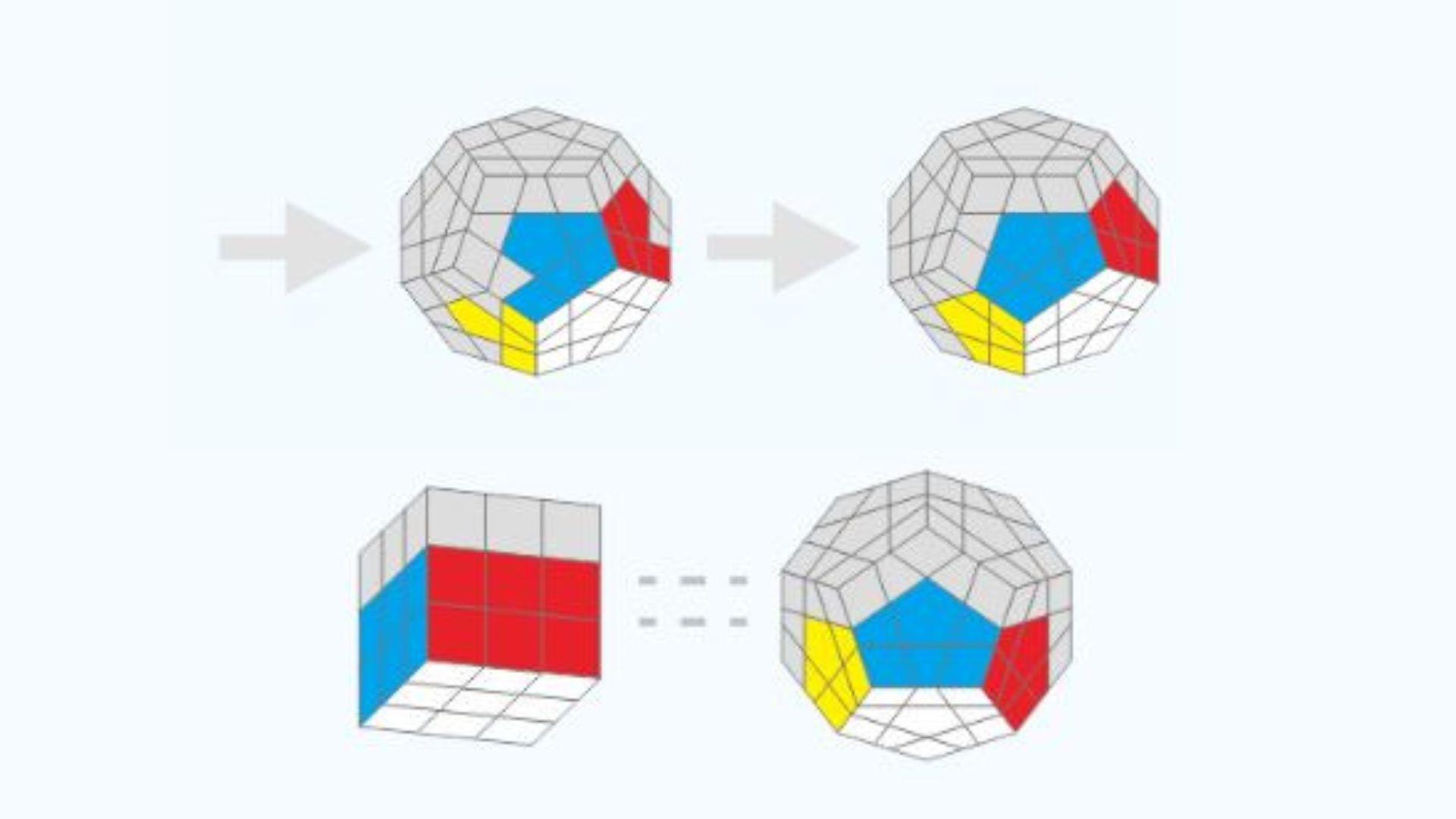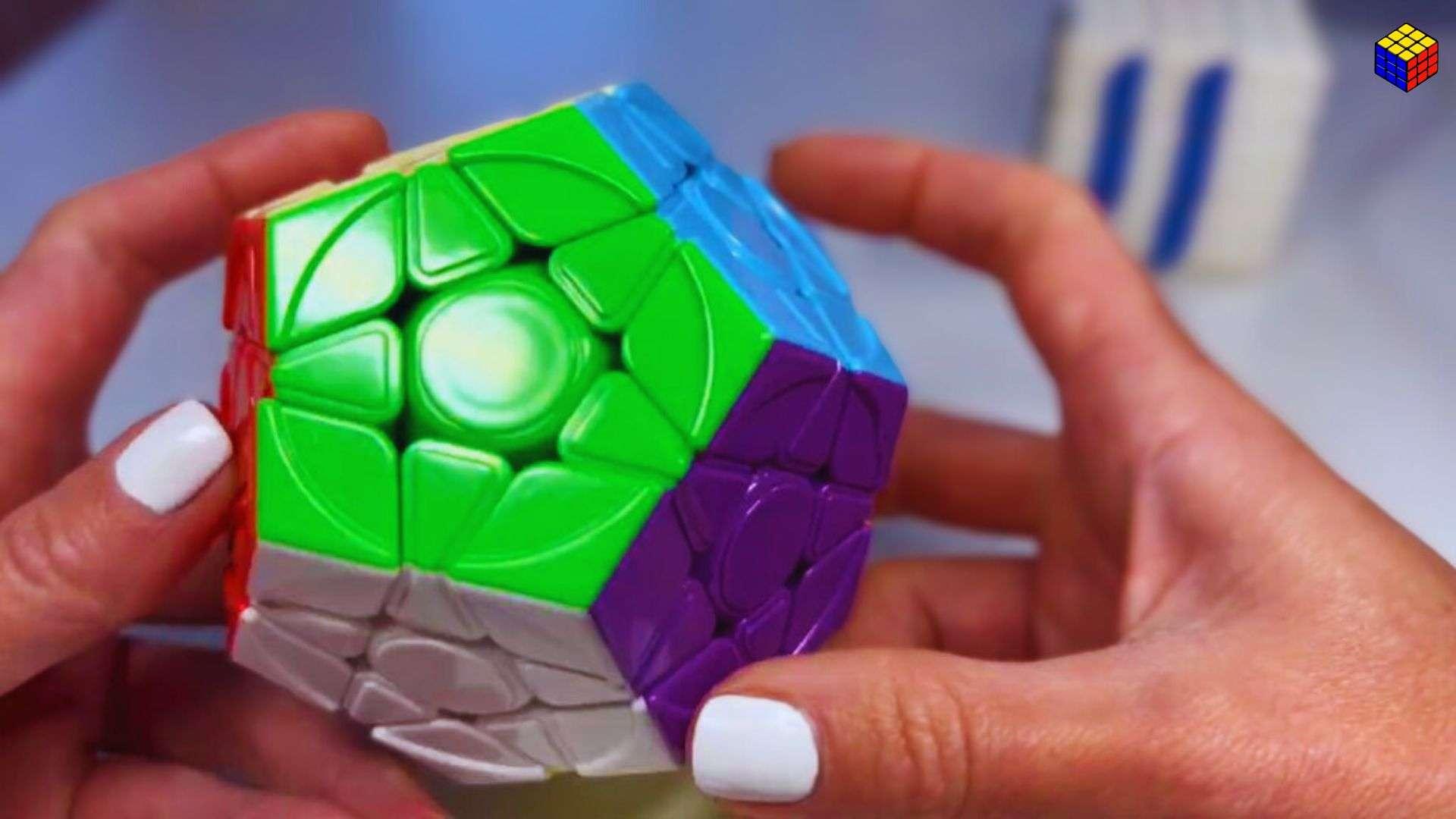How to solve a megaminx? Just Follow these Steps

The Megaminx, commonly known as the Dodecahedron Rubik’s Cube, is a twisting puzzle that is equally challenging and captivating. It offers an exciting challenge for puzzle players looking to test their ability to solve problems. Are you curious about how to solve a Megaminx? With its twelve sides, five layers per side, 50 flexible pieces, and 70 colorful pieces, the Megaminx offers an unusual solving experience that is different from the standard 3×3 Rubik’s Cube.
Even though solving this twelve-sided puzzle may appear difficult at first, it is entirely possible with the right tactics and direction. In this article, we will offer a step-by-step guide on how to solve the Megaminx, cutting it down into smaller steps to make the process simpler for both beginners as well as expert solvers.
The Megaminx
The Megaminx was first called the Hungarian Supernova. Uwe Mèffert designs this puzzle in a dodecahedron shape. It is similar to the Rubik’s Cube but has 12 faces with a star-pattern arrangement of 11 pieces. There are five edge pieces, five corner pieces, and a fixed center piece, making a total of 50 separate parts. The puzzle usually comes in 12 different colors.
There are different variations like the white-body and black-body Megaminx including a smaller 2×2 version called the Kilominx. The Megaminx is also available in other larger shapes puzzles like the Zettaminx, Gigaminx, Yottaminx, Petaminx, and Teraminx.

How to Solve a Megaminx?
To solve the Megaminx first you need to learn how to solve the 3×3 Rubik’s Cubes because the method to solve these two puzzles is very similar. If you can crack the classic 3×3 Rubik’s cube, you’ll have no trouble with the Megaminx cube. The following is an explanation of how to solve a Megaminx.

Step 1 – Understand the Notations
Before trying to solve the Megaminx, take some time to get familiar with the puzzle. Pay attention to its structure and observe the color arrangement as well as understand how the parts move with each other. The Megaminx consists of twelve sides, each expressive one of the twelve colors, and five layers per side.
The goal is to arrange the colors on each side like each side is a solid color, just like a classic Rubik’s Cube. it’s important to understand the notations used for the Megaminx to successfully talk about solving tactics. Some notations to represent different moves are as follows:
| L | Rotate the left face clockwise |
|---|---|
| L’ | Rotate the left face counter-clockwise |
| R | Rotate the right face clockwise |
| R’ | Rotate the right face counter-clockwise |
| D | Rotate the down face clockwise |
| D’ | Rotate the down face counter-clockwise |
| U | Rotate the upper face clockwise |
| U’ | Rotate the upper face counter-clockwise |
| B | Rotate the back face clockwise |
| B’ | Rotate the back face counter-clockwise |
| F | Rotate the front face clockwise |
| F’ | Rotate the front face counter-clockwise |
Step 2 – Solve the First Layer
Start by solving the centers of each side. Since there are twelve colors on the Megaminx, there will be twelve centerpieces. Focus on one side at a time and bring into line the centerpiece with its matching colors on adjacent sides. After that, solve the corner parts of the first layer. Look for corner parts that have the same three colors as the center parts already in place. Match the corner part to the parallel centerpiece to complete the first layer.

Step 3 – Solve the Second Layer
After you complete the first layer, move your focus to solving the edge parts of the second layer. Find edge pieces that match the colors of the center parts on the adjacent sides. Use appropriate algorithms like R U’ R’ U R U R’, to place these parts in their proper locations.

Step 4 – Solve the Third Layer
After you’ve finished the first two layers, focus on solving the centers of the remaining sides. Align each centerpiece with the colors that match on adjacent sides. After solving the centers, it’s time to solve the corner pieces. Observe the corners that are already in their proper placements and identify which ones require rearranging. Use an algorithm or move sequence created specifically for the Megaminx to solve the corners. Place these corner parts into their exact positions by algorithms like R U’ R’ U R U R’.
After solving the corners, change your focus to the third layer edges. These edge parts should match the colors of the center parts on the remaining sides. Look for incomplete edges on the third layer and their matching colors on adjacent sides. Insert the edges into their right positions using algorithms like F R U’ R’ U’ R U R’ F’. By using these algorithms, you can move the edges into their particular positions, steadily finishing the third layer.

Step 5 – Final Touches
After solving all the pieces, confirm the positions of all the parts on the Megaminx. You may need to make some changes to bring into line the layers properly. Take a minute to observe each side, making sure that all the colors match correctly. If you find any misplacement, use algorithms that modify only the orientation of pieces without changing their placements like R U R’ U’ R’ F R2 U’ R’ U’ R U R’ F’.
Practice and Speed
Don’t forget to keep practicing after you learn how to solve a Megaminx. Solving the Megaminx needs practice along with an understanding of the algorithms involved. As you gain experience with the solving process, strive to improve your efficiency and speed. Participate in solving sessions regularly to strengthen the algorithms and improve your problem-solving skills.

Frequently Asked Questions
Q: Is it hard to solve a Megaminx?
Solving a Megaminx is very simple because the main concepts to solve it are quite similar to the classic 3×3 Rubik’s Cube.
Q: Is solving a Megaminx like a 3×3?
The procedure and algorithms to solve a Megaminx are very similar to the 3×3 Rubik’s Cube. If you can easily solve the 3×3 Rubik’s cube, you won’t have any problems solving a Megaminx.
Q: What is harder Megaminx or 4×4?
Solving a Megaminx is harder than a 4×4 cube. Megaminx is quite similar to a 3×3 cube but a 4×4 cube needs to turn down the complete puzzle to a 3×3 cube.
Q: Is a 2×2 harder than a 3×3?
The 2×2 is the easiest version of the Rubik’s Cube. Even solving a 2×2 Rubik’s cube is much easier than a classic 3×3 Rubik’s cube.
Final Words
Solving a Megaminx can seem difficult but with a logical approach, patience, and practice, anyone can unravel this enigmatic puzzle. Solving it needs patience and persistence as well as practice. By following the step-by-step procedure of how to solve a Megaminx and practicing regularly, you will develop the skills required to solve the Megaminx with ease. You’ll be sound on your way to winning the complexity of this fascinating dodecahedral puzzle. Keep in mind that persistence is the key.
Solving the Megaminx is not only just about learning algorithms but also understanding the basic principles and familiarizing your method as needed. With time, devotion, and a bit of tactic, you’ll become a Megaminx master. You can impress everyone with your solving skills. So, grab your Megaminx, start twisting, and go on board on an exciting solving journey.
Happy Puzzling! Come to solve other Games too on techbusinesinsider.com

